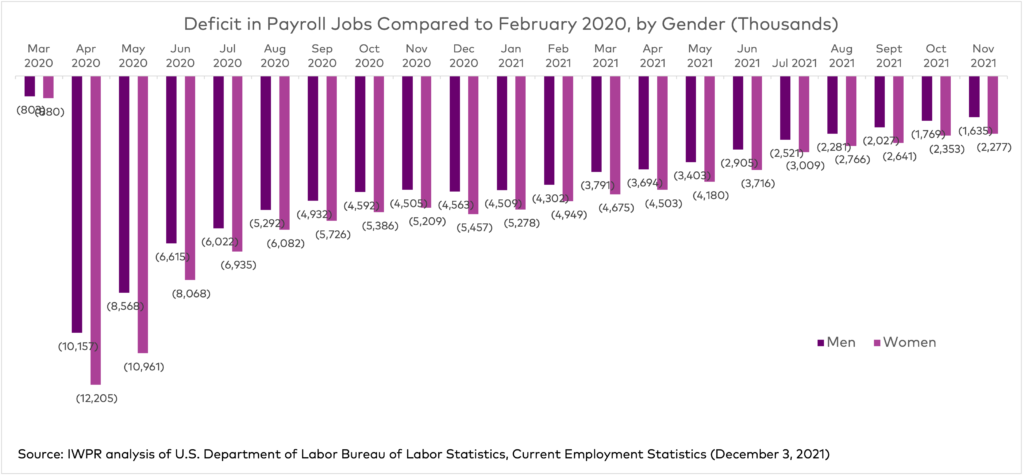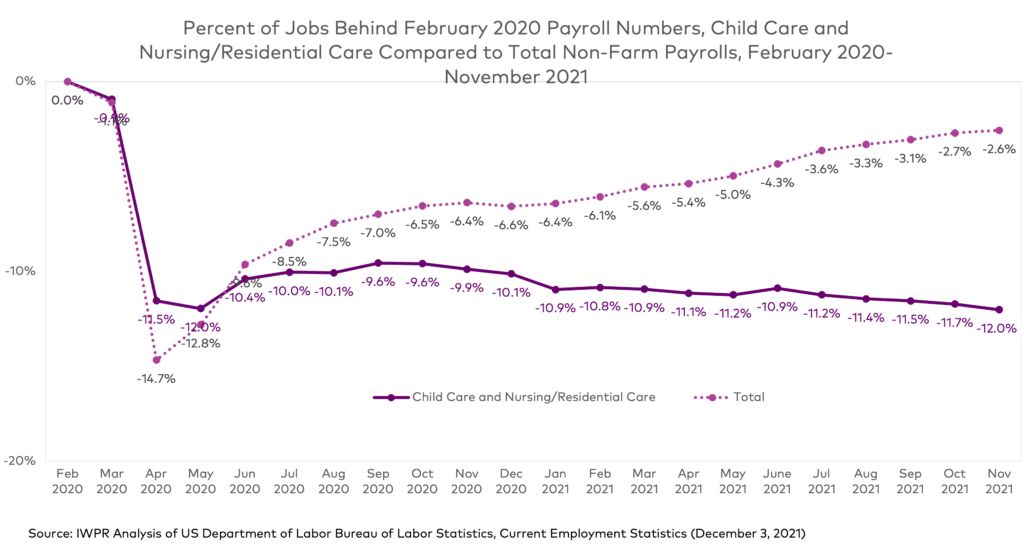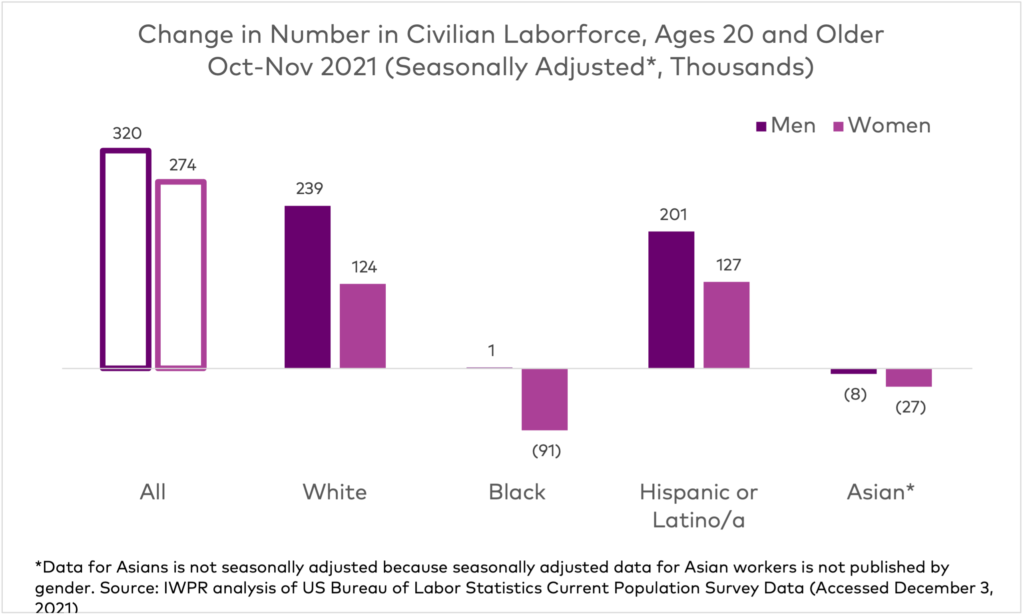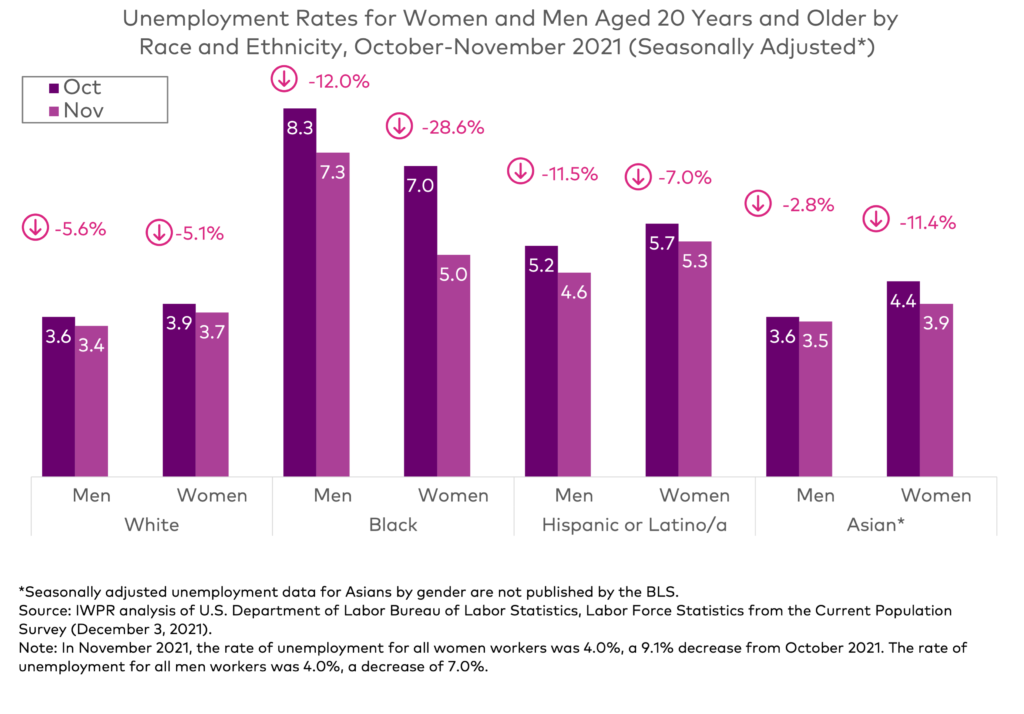November jobs report data released on Friday (December 3) by the BLS shows a mixed picture. Employers added jobs to their payrolls, but substantially fewer than last month, especially for women. A high number of women and men rejoined or entered the labor force. But fewer women than men entered, and the number of Black women in the labor force declined. Unemployment fell across the board, especially for Black women. A growing care economy gap—with elder and child care jobs declining slightly while overall jobs were added—highlights the challenges for women and men with care responsibilities. Women’s recovery continues to lag behind that of men.
For more details on the “she-cession” and the recovery, the care economy, and unemployment, see below.
November #JobsDay data show a decline in job growth for women compared to the previous month. Women gained just 76,000 jobs, 36.2 percent of 210,000 new jobs on payroll (compared to 304,000 out of 531,000 in October.) The she-cession continues: Women are still 2.3 million jobs behind pre-COVID February 2020, while men are at 1.6 million.

November’s data also reveals where child care and elder care jobs fell further behind the overall economy. Jobs on payroll in nursing, mental health, and community care facilities, as well as child day care centers, declined. The gap between November numbers and pre-COVID- 19 jobs numbers has grown to 12.0 percent, while the gap for all jobs in the economy narrowed to 2.6 percent. Women still wait for access to quality care and quality care jobs to return to work.

A welcome drop in unemployment for adults across the board is shown, but particularly for Black women. New data for November show a big decline in adult Black women’s unemployment—from 7.0 to 5.0 percent, an overall decline of 28.6 percent. Black men’s unemployment also fell strongly, from 8.3 to 7.3 percent. The fall in the rate of adult Black women’s unemployment reflects two trends: The number of Black women who are employed grew by 121,000) but the number of Black women in the labor force fell by 91,000. Black women may be voting with their feet, quitting jobs that are low quality or too risky.

According to the chart below, the unemployment rate for all adult women fell from 4.4 to 4.0 percent, and for all adult men from 4.3 to 4.0 percent. Latina unemployment fell from 5.7 to 5.3 percent, Asian women’s from 4.4 to 3.9 percent (seasonally unadjusted), and White women’s from 3.9 to 3.7 percent compared to October.
Racial and ethnic differences in unemployment persist but are slightly less marked this month. Adult Black women’s rate of unemployment is 1.35 times as high as White women’s, compared to 1.8 times as high in October. Latinas’ rate is 1.4 times higher, same as the month of October.

###
Follow the #JobsDay conversation on Twitter, and subscribe to our In The Lead email newsletter to stay updated on IWPR’s latest news.


